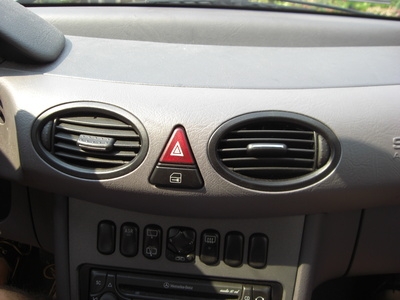
Air conditioning is a major relief when you're stuck in a car in 100-degree weather. The car windows can create a greenhouse effect and cause heat to build up inside a car quickly. Air conditioning is not only a convenience, it can be lifesaving in extreme temperatures. Air conditioners will lose performance as the system loses gas, either from leakage or use. Charging an auto air conditioner can be done yourself.
Check the year of your car to ensure it was made after 1993. Cars made in 1993 and earlier use Freon, a coolant that is currently illegal for consumers to own and use. You would have to have your car's AC charged by a professional technician. Cars made after 1993 use a different coolant, R-134a, which you can use to charge the AC yourself.
Fit the valve of the refill hose and pressure gauge tightly over the tip of the refrigerant can.
Open the valve for a second to send a burst of coolant out of the can and through the hose and then close the valve immediately. This forces air out of the hose. You don't want air going into your air conditioning.
Turn off your car's engine and open the hood. Slide the other end of the hose over the low-pressure fitting on your car's air conditioning, which is usually located toward the left side of the engine. Check your vehicle's service manual for the exact location. Do this as soon as you shoot the coolant through the hose to prevent more air from entering the hose.
Turn on your car's engine and set your air conditioner to the highest setting.
Hold the can upright to avoid liquid coolant from seeping out of the can and down the hose. Open the valve on the R-134a can and allow 10 minutes for the system's compressor to drain the can's contents into the AC system.
Close the valve on the can once the gauge is showing the appropriate amount of pressure in accordance with your service manual.
Turn the engine off and disconnect the hose from the low-pressure service fitting.